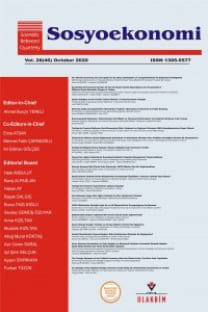Quality of Supply and Efficiency: An Analysis of Portuguese Electricity Distribution Networks
-
Quality of Supply and Efficiency: An Analysis of Portuguese Electricity Distribution Networks
-,
___
- Bagdadioglu, N., C. Waddams Price, and T.G. Weyman-Jones (2007), “Measuring Potential Gains from Mergers among Electricity Distribution Companies in Turkey using a Non-parametric Model”, The Energy Journal, 28, 2, 83-110.
- Burns, Phil, Cloda Jenkins and Thomas Weyman-Jones (2006), “Information Revelation and Incentives”, in: Michael Crew and David Parker (eds.) International Handbook of Regulation, Edward Elgar, Cheltenham.
- Coelli, T.J., A. Estache, S. Perelman and Lourdes Trujillo (2003), A Primer on Efficiency Measurement for Utilities and Transport Regulators, Washington, World Bank Institute.
- Fare, R., S. Grosskopf, M. Norris and Z. Zhang (1994), “Productivity Growth, Technical Progess and Efficiency Change in Industrialized Countries”, American Economic Review, 84, 66-83.
- Fried, Harold O., C.A. Knox Lovell and Shelton S. Schmidt (2007), “Efficiency and Productivity”, in: Harold O. Fried, C.A. Knox Lovell and Shelton S. Schmidt (eds.) The Measurement of Productive Efficiency and Productivity Growth, Oxford, Oxford University Press.
- Giannakis Dimitrios, Tooraj Jamasb, Michael Pollitt (2005), “Benchmarking and incentive regulation of quality of service: an application to the UK electgricity distribution networks”, Energy Policy, Volume 33, Issue 17, November, 2256-2271.
- Growitsch, Christian, T. Jamasb and M. Pollitt (2009), “Quality of Service, Efficiency, and Scale in Network Industries: An Analysis of European Electricity Distribution”, Applied Economics, Vol. 41 (20), 2555-2570.
- Jamasb, T., and M. Pollitt (2001), “Benchmarking and Regulation: international electricity experience”, Utilities Policy, 9, 3, 107-30.
- Langset T. (2001), Quality dependent revenues – incentive regulation of quality of supply, Oslo, The Norwegian Water Resources and Energy Directorate, (NVE).
- Ray, Subhash C. (2004), Data Envelopment Analysis: theory and techniques for economics and operations research, Cambridge, Cambridge University Press.
- Scheel, H. (2001), “Undesirable Outputs in Efficiency Evaluations”, European Journal of Operational Research, 132, 2, 400-10.
- ISSN: 1305-5577
- Yayın Aralığı: 4
- Başlangıç: 2005
- Yayıncı: Sosyoekonomi Derneği
Electricity Market Design for Germany
Quality of Supply and Efficiency: An Analysis of Portuguese Electricity Distribution Networks
Thomas WEYMAN-JONES, Júlia BOUCINHA, Catarina INÁCIO
Türkiye Elektrik Sektöründe Reform Süreci, Regülâsyon ve Rekabet Politikası
Alparslan BAŞARAN, Necmiddin BAĞDADİOĞLU
Is There a Stochastic Trend in European Union Emission Trading Scheme Prices?
Welfare Effects of Electricity Transit
Mikulas LUPTACIK, Heinrich OTRUBA
Türkiye'de Elektrik Tüketimi ve Ekonomik Gelişmişlik Düzeyi İlişkisi: Yatay Kesit Analizi
